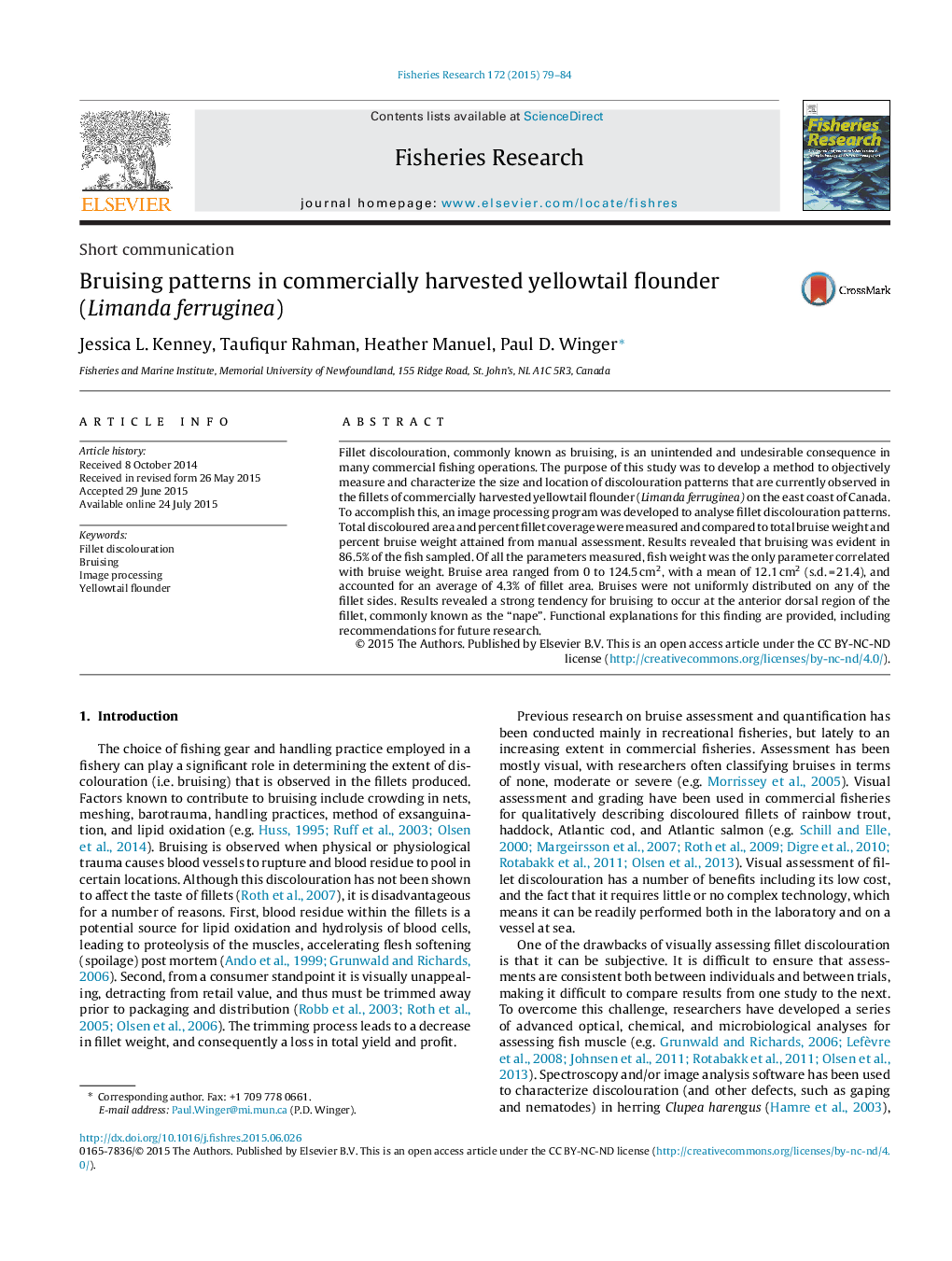| کد مقاله | کد نشریه | سال انتشار | مقاله انگلیسی | نسخه تمام متن |
|---|---|---|---|---|
| 6385410 | 1626796 | 2015 | 6 صفحه PDF | دانلود رایگان |

- This study developed a method to measure and characterize discolouration patterns observed in the fillets of yellowtail flounder (Limanda ferruginea) on the east coast of Canada.
- An image processing program was developed to analyse fillet discolouration patterns for left and right fillets, including the size and location of bruising.
- Estimates of bruise area ranged from 0 to 124.5Â cm2, with a mean of 12.1Â cm2, and accounted for an average of 4.3% of fillet area.
- Bruises were not uniformly distributed on any of the fillet sides. Results revealed a strong tendency for bruising to occur at the anterior dorsal region of the fillet, commonly known as the “nape”.
Fillet discolouration, commonly known as bruising, is an unintended and undesirable consequence in many commercial fishing operations. The purpose of this study was to develop a method to objectively measure and characterize the size and location of discolouration patterns that are currently observed in the fillets of commercially harvested yellowtail flounder (Limanda ferruginea) on the east coast of Canada. To accomplish this, an image processing program was developed to analyse fillet discolouration patterns. Total discoloured area and percent fillet coverage were measured and compared to total bruise weight and percent bruise weight attained from manual assessment. Results revealed that bruising was evident in 86.5% of the fish sampled. Of all the parameters measured, fish weight was the only parameter correlated with bruise weight. Bruise area ranged from 0 to 124.5 cm2, with a mean of 12.1 cm2 (s.d. = 21.4), and accounted for an average of 4.3% of fillet area. Bruises were not uniformly distributed on any of the fillet sides. Results revealed a strong tendency for bruising to occur at the anterior dorsal region of the fillet, commonly known as the “nape”. Functional explanations for this finding are provided, including recommendations for future research.
Journal: Fisheries Research - Volume 172, December 2015, Pages 79-84